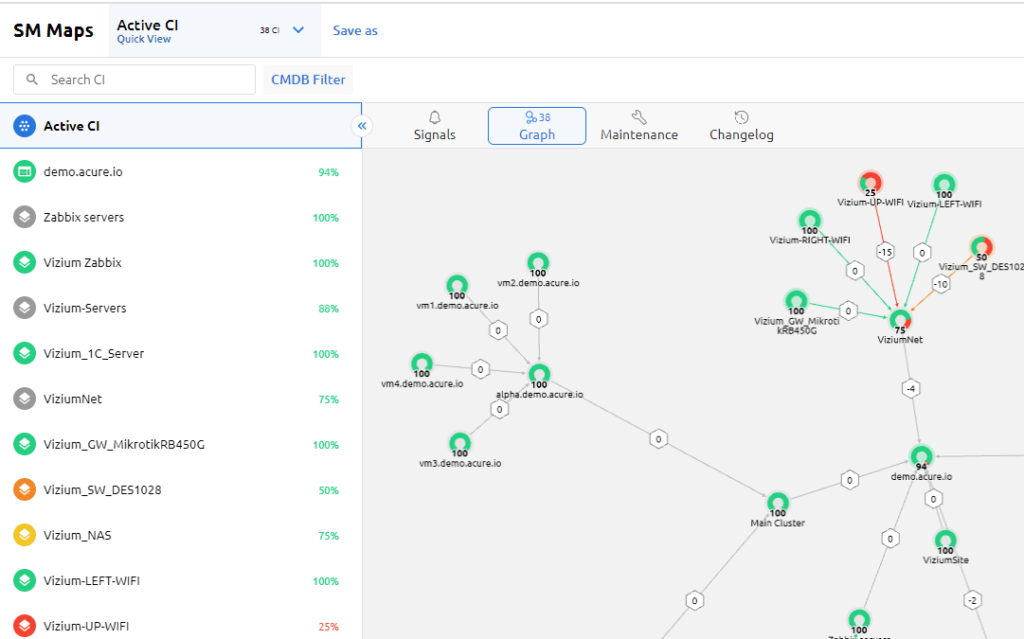IT failures happen, and analyzing their impact delivers greater insight into the company’s performance. Additionally, understanding what business impact analysis in ITIL is can help you understand how resilient your IT infrastructure is and where to make improvements.
Because IT infrastructures encompasses software, hardware, and human power, they interact at varying levels. With business impact analysis, you can understand each of those levels, understand the health of your system, and plan for business continuity if part of the system goes down.
What Is Business Impact Analysis in ITIL?
Business impact analysis in the IT Infrastructure Library demonstrates how IT systems integrate within a business.
With many dynamic components in an IT infrastructure, it can be tricky to understand the entire system and how each subsystem impacts business operations and application and server performance.
Business impact analysis gives a clear picture of the IT infrastructure, its topography, and its weaknesses to show where the company needs improvements.

Why Is IT Business Impact Analysis Important for Your Business?
Businesses always face risk, and the main purpose of business impact analysis for IT infrastructure is risk management. Understanding risks and potential bottlenecks in the IT system allows companies to evaluate, minimize, and eliminate threats.
Addressing specific potential risks helps businesses take action ahead of time to mitigate risks should circumstances affect performance.
By using business impact analysis for IT infrastructure with dynamic components, you will understand the following about your company:
- How to avoid system outages and what initiatives are in place to prevent them
- The maximum amount of downtime allowed for critical systems
- The most important IT systems and processes critical to business operations and performance
- The recovery order of critical IT systems and processes if a failure occurs
When tackling the complexity of analysis, it’s best to start at micro levels, with small implementations and examinations. By understanding small, individual failures or successes, you will notice interdependencies and how they affect your overall infrastructure.
Examples of Business Impact Analysis for IT
An example of business impact analysis for IT infrastructure is examining storage as a service. With most businesses relying heavily on the cloud, storage is essential for business functions such as email, file systems, document creation, communication services, enterprise resource planning, and more.
If a company’s cloud storage service, with servers located in one region, experiences failure, divisions worldwide may face downtime, disruptions, or other impacts.
Some measurement examples of business impact analysis for IT infrastructure include:
- Creating a system to determine an activity’s impact on operations
- Categorizing IT systems and processes by profitability
- Ranking IT systems and processes by how necessary their recovery is to operations; critical, vital, important, non-essential, etc.
- Analysis to determine how combinations of failures can factor into operations
Through this business impact analysis, a company can devise a plan for restoring business operations if its cloud storage fails.
How Acure Can Help with Business Impact Analysis for IT Infrastructure
Impact analysis in Acure helps you understand how much the problem affects the business and which incident takes priority.
After collecting the data and correlation setup, you can see the status of the entire IT infrastructure and information about all incidents on a single screen.

Topology shows the whole IT infrastructure like a tree with the relationships between configuration items. You can click on an affected CI to see the health, weight and dependecies and easily identify the source of the problem using the connections on the graph. Then, via log analyzing, you can easily identify the impact of the problem on a particular service.
👉 Try the root cause and business impact analysis approach by yourself in Acure Userspace.





